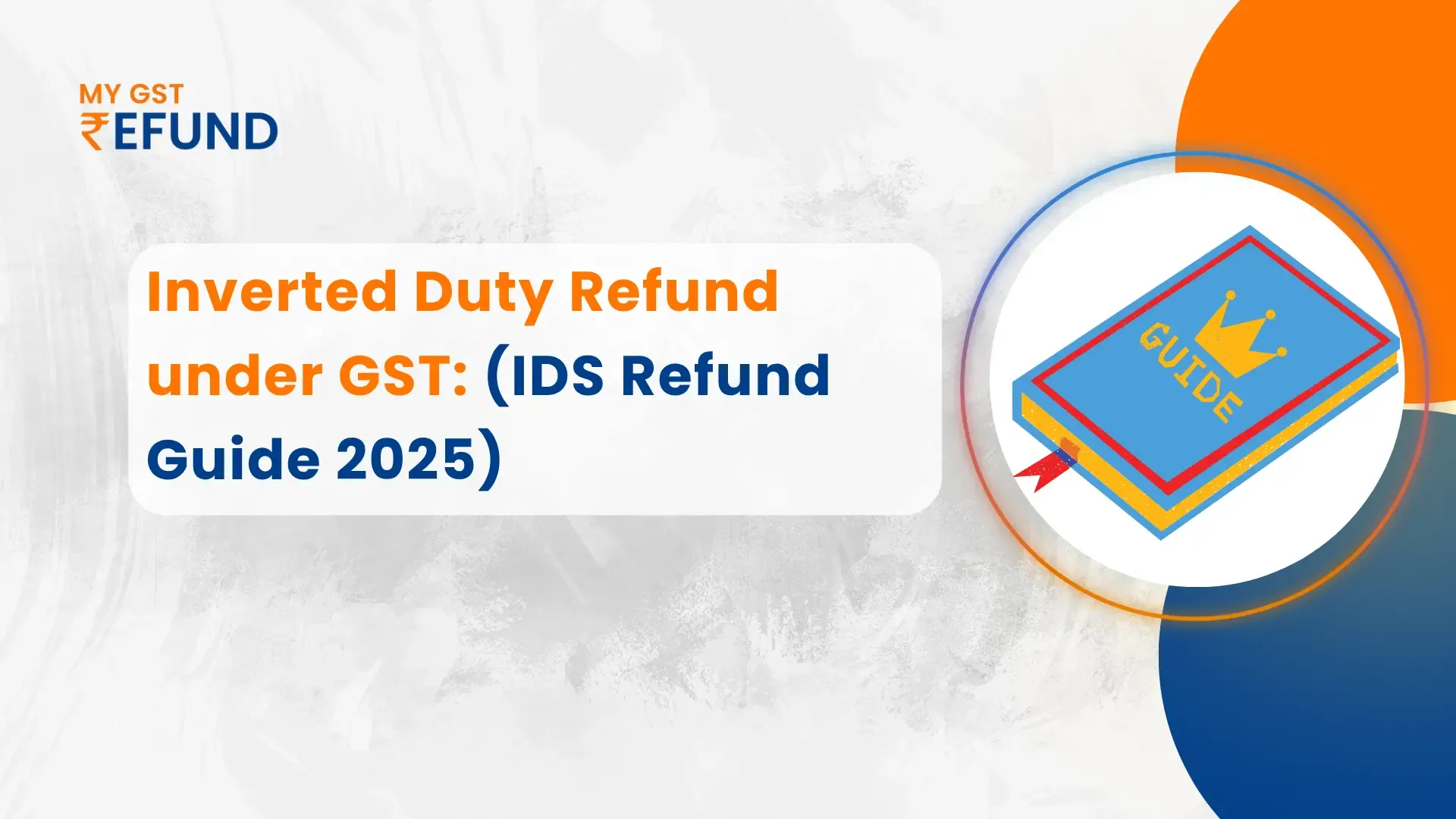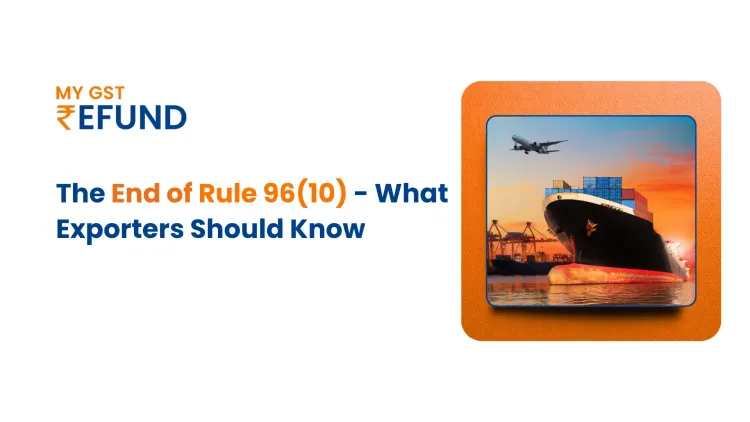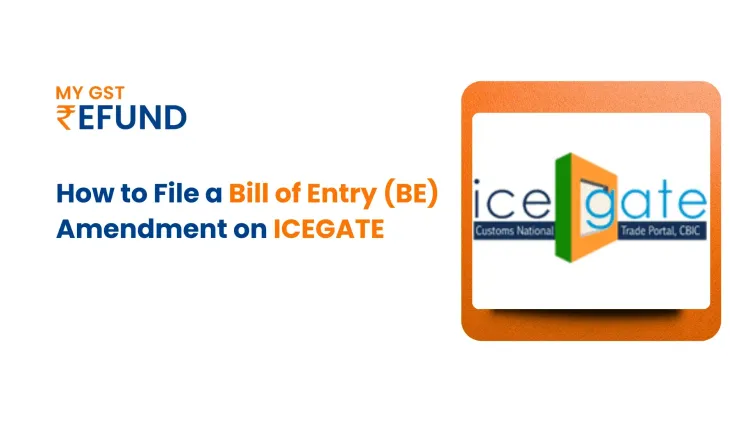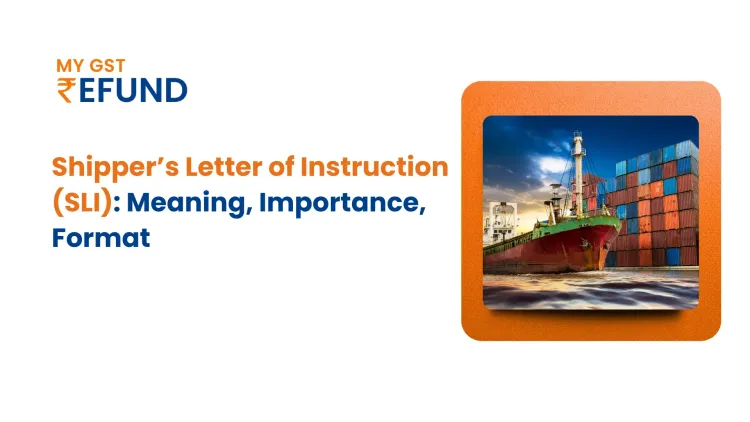How to claim Inverted Duty Refund under GST (IDS Refund Guide 2025)
Published on: Fri Oct 24 2025
Bio (Reveal/Hide)

How to claim Inverted Duty Refund under GST
The Inverted Duty Structure (IDS) occurs when the rate of tax on inputs is greater than the rate of tax on outputs and resulting in a scenario where businesses collect Surplus Input Tax Credit (ITC) that cannot be used at that moment. Such a mismatch may occupy a large amount of working capital, particularly in those industries where the input costs are high GST.
It is hence imperative to claim a refund under IDS. Not only does it open blocked capital, but it also assists businesses to keep their cash flow healthy, stay competitive, and not violate the GST regulations. To exporters and manufacturers, the knowledge of how to make an IDS refund is an important part of their financial planning and running.
What is the Inverted Duty Structure under GST
Inverted Duty Structure is defined under section 54(3) of the CGST Act. It is a situation where the GST paid on inputs exceeds the amount of GST paid on outputs.
Commonly impacted industries
Textiles: The raw fabric is normally taxed more than garments.
Footwear: Unprocessed items like leather can be taxed at 18 per cent GST, while ready shoes are taxed at 5 per cent GST.
Fertilizers and Chemicals: Inputs are taxed more than the end products being supplied.
Electronics Components: Some components would attract a higher GST compared to final products.
Example: A shoe company is buying leather at 18 per cent GST but selling shoes at 5 per cent GST. The excess ITC of raw material cannot be cleared against output GST, and hence a claim has to be made for refund on IDS.
Eligibility Conditions for Inverted Duty Refund
Rule 89(5) of the CGST Rules governs the eligibility. To be eligible to claim a refund under IDS:
- There must be an ITC charged by the taxpayer due to inverted duty.
- Nil-rated and exempt supplies cannot be claimed as a refund.
- There is an export grace, which is governed by zero-rated supply rules.
When Refund is Restricted
- Section 17(5) in the ITC claimed has blocked credits.
- Refund pertains to ineligible or exempt supplies.
- The understanding of these rules will assist companies in preventing rejections on non-related grounds and loss of time while refunding.
Documents to be maintained for IDS Refund
The following documents are to be maintained for filing an IDS refund:
- GSTR-1 and GSTR-3B returns of the same tax.
- All inverted-rated supplies are shown in Statement 1A/ Annexure 1 in Excel or JSON format.
- Purchase register and invoice of the input tax credits.
- Tabulation of the calculation of the refund, along with supporting information.
- CA certificate (when required), especially in cases where the quantum to be refunded is high or complex.
- Keeping all the documents intact reduces the chances of queries and accelerates the rate of refunds.
Step-by-Step Procedure to File an Inverted Duty Refund
- Login to GST Portal → Services × Refunds × Application of Refund.
- Choose Refund Type, choose "Refund on account of Inverted Duty Structure.
- Upload Necessary Documents → 1A Statement, purchase invoices, purchase register, and invoices.
- Auto-population Results of Data → GSTR-1 and GSTR-3B Data are pre-populated to reduce the error of hand-population.
- Submit and Verify/Sign with DSC (Digital Signature Certificate) or EVC (Electronic Verification Code).
- ARN Generation → Upon submission, a system will generate an Application Reference Number (ARN) to track status.
By following these steps, your claim for a refund will be accurate, compliant, and quicker to process.
Calculation of Refund Amount
The refund amount that is paid under IDS is calculated under Rule 89(5):
Refund = Turnover of inverted rated supply x Net ITC/ Adjusted Total Turnover- Tax payable on such inverted supply.
Example Calculation
- Inverted rated supply turnover: 12, 00, 000.
- Net ITC: ₹1,80,000
- Adjusted Total Turnover: ₹60,00,000
- Inverted supply tax payable: 50,000.
Refund = (12,00,000 × 1,80,000 / 60,00,000) – 50,000 = 36,000 – 50,000 = ₹0 (if negative, refund = 0)
Correct calculations are important to avoid being rejected or queried by the auditors.
Time Limit to Recover a Refund
The refund claim must be made within two years from the close of the relevant financial year. The significance of claiming within the prescribed time is that no late claims can be made, something that might affect working capital.
Common Avoidance Mistakes
- Selecting an unsuitable tax period upon filing.
- Dissent between GSTR-1, GSTR-3B, and statement 1A.
- Refund on blocked credits under Section 17(5).
- Inadequate or missing documentation, including invoices or CA certificates.
- Incorrect calculation of net ITC, which is rejected.
All these shortcomings will be eliminated, and there will be hassle-free refund processing.
Latest Updates regarding IDR (2025)
- The GST system has been designed to improve IDS refund processing.
- The risk scoring using the system would reduce the manual checking of low-risk claims.
- There is a current provisional refund of 90% to compliant taxpayers.
- Claims become more precise and are faster to make through simplified forms of refund and automation technology.
These measures are aimed at releasing workable capital within a short time frame and reducing bureaucratic obstacles.
How Exporters Can Make Use of Automated Tools for Processing Refunds
Businesses can now utilize websites such as MY GST Refund to simplify the process of IDS refund and automate it:
- The GSTR-3B and GSTR-1 are auto-populated and assist in reducing errors in case of manual filing.
- Statement 1A contains pre-filled statements to be utilized in order to calculate the value of the refunds correctly.
- The invoices, CA certificates, and purchase registers are kept in a central repository.
- Real-time refund tracking dashboards help in monitoring the status, pending activity, and deadline alerts.
The use of these automated tools will help the exporters to save time, minimize errors, and receive refunds quickly, enabling the smooth operation of the operations and better working capital.
How to Claim Your IDS Refund Faster with MY GST Refund Platform
The blocked input tax credits may slow down the working capital and growth of your business. On time and correct IDS refunds are very important to ensure a smooth running.
Exporters and manufacturers can get:
- Automatically populate GSTR-1 and GSTR-3B data.
- File using Quick Statement 1A.
- Digitally manage documents, such as invoices and CA certificates.
- Follow up status of track refunds using the live dashboard and be notified automatically.
- The action taken is directly associated with your cash flow. Get your requirements analyzed, get your documents in place, and in any kind of uncertainty, visit GST experts at MY GST Refund dashboard.
- Our experts guarantee you appropriate refund claims, reduce delay, and get your blocked capital unlocked hassle-free.
Conclusion
It is imperative to claim an Inverted Duty Structure (IDS) refund for maintaining the cash flow, financial solidity, and efficiency of operations.
Having access to the requirements, paperwork, calculations, and how to claim the refund, companies can ensure it arrives within a fairly brief period and in order. Utilizing websites like MY GST Refund also simplifies the process and eliminates human error, while accelerating the claim approvals.
Get your papers ready, price your refund, and lodge your IDS refund claim today to release blocked funds to enable business operations in GST.
Frequently Asked Questions
Q1. What is an Inverted Duty Structure of GST?
An Inverted Duty Structure (IDS) is a situation where the rate of GST on inputs is higher than the rate of GST on outputs so that there is an accumulation of unused of Input Tax Credit (ITC). Section 54 (3) of the CGST Act provides for the refund of this excess ITC to provide an uninterrupted flow of cash.
Q2. Who can claim the Inverted Duty Refund?
The refund can be claimed by companies that incur more GST on the inputs than on the outputs, say companies in the fertilizer, footwear, and textiles industries. However, the above category does not hold for exporters as well as suppliers of nil-rated or exempt supplies.
Q3. How can I claim an Inverted Duty Refund with the help of GST?
Application: You can apply through the GST Portal Services Refunds Application for a Refund due to the Inverted Duty Structure. Supporting documents like Statement 1A, GSTR-1, GSTR-3B, and invoices should be attached, and send the application along with DSC/EVC to get an ARN to monitor the application.
Q4. What is the time limit for claiming an IDS refund?
The claim for the refund must be made within two years from the financial year in which the excess ITC was earned. The late applications can be rejected, or they can be suspected of being verified by hand.
Q5. How long does it take to get the IDS Refund after submitting?
In general, for low-risk taxpayers, a preliminary refund of 90% is generally issued within a 7–15 timeframe for low-risk taxpayers, and the balance will be issued upon review completion. The timelines may vary based on the completeness of supporting documents and the department's capacity.
Q6. Can I monitor the status of my IDS Refund online?
Yes. You can follow your refund through the GOV portals and via your own ARN number (Application Reference Number). MY GST Refund can even give you a live refund status dashboard with alerts and the status progress of your refund claims.
Related Posts






